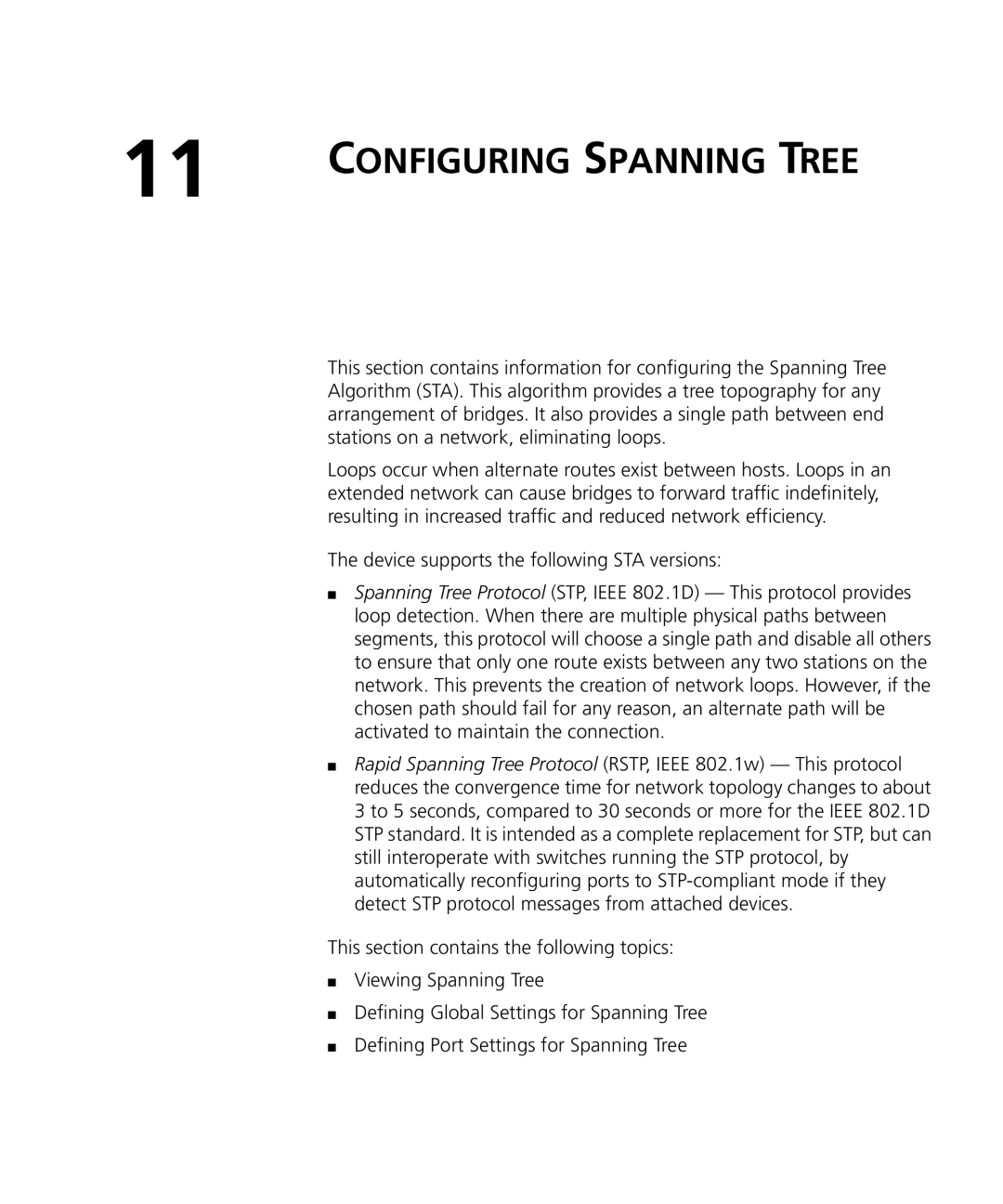11 | CONFIGURING SPANNING TREE |
|
This section contains information for configuring the Spanning Tree Algorithm (STA). This algorithm provides a tree topography for any arrangement of bridges. It also provides a single path between end stations on a network, eliminating loops.
Loops occur when alternate routes exist between hosts. Loops in an extended network can cause bridges to forward traffic indefinitely, resulting in increased traffic and reduced network efficiency.
The device supports the following STA versions:
■Spanning Tree Protocol (STP, IEEE 802.1D) — This protocol provides loop detection. When there are multiple physical paths between segments, this protocol will choose a single path and disable all others to ensure that only one route exists between any two stations on the network. This prevents the creation of network loops. However, if the chosen path should fail for any reason, an alternate path will be activated to maintain the connection.
■Rapid Spanning Tree Protocol (RSTP, IEEE 802.1w) — This protocol reduces the convergence time for network topology changes to about 3 to 5 seconds, compared to 30 seconds or more for the IEEE 802.1D STP standard. It is intended as a complete replacement for STP, but can still interoperate with switches running the STP protocol, by automatically reconfiguring ports to
This section contains the following topics:
■Viewing Spanning Tree
■Defining Global Settings for Spanning Tree
■Defining Port Settings for Spanning Tree
